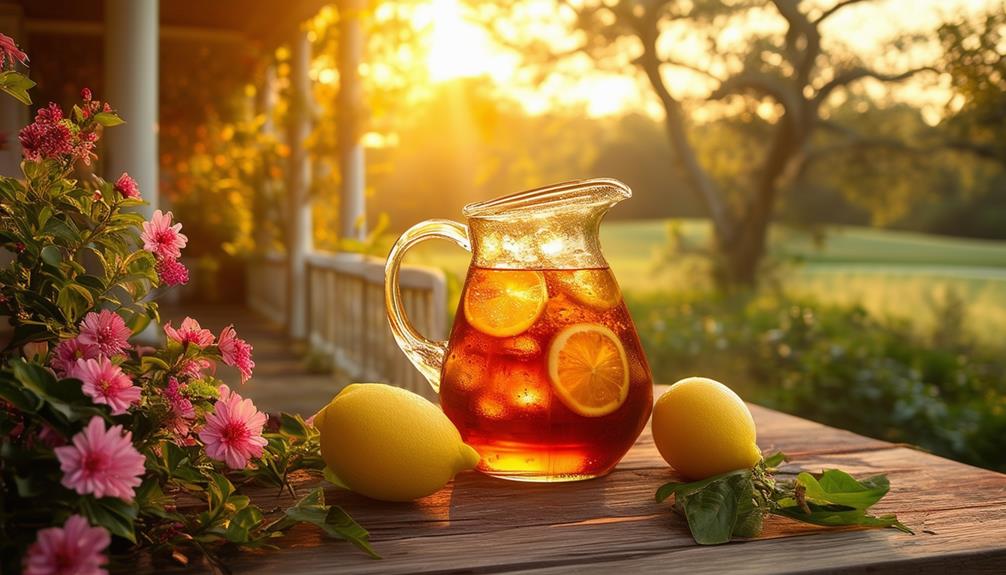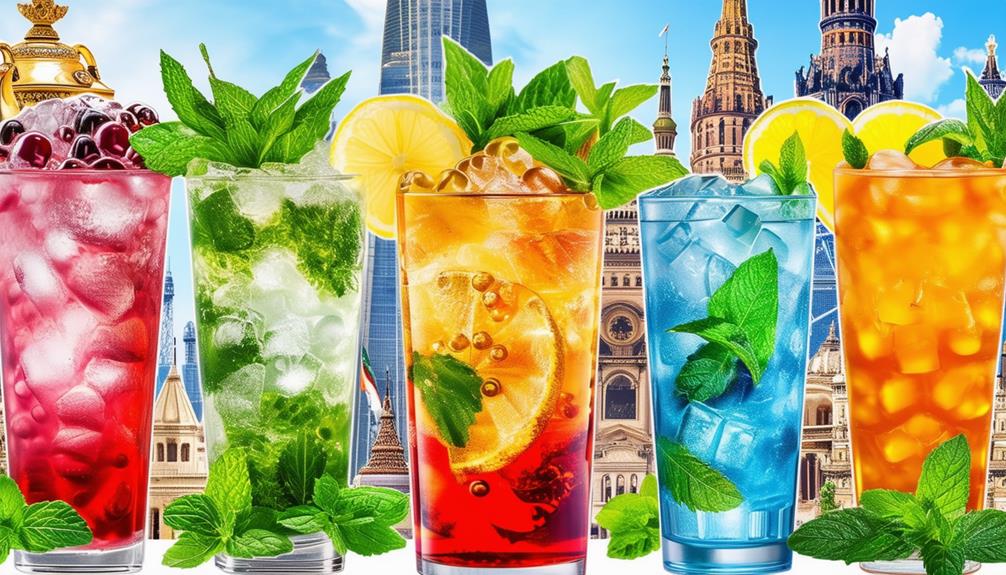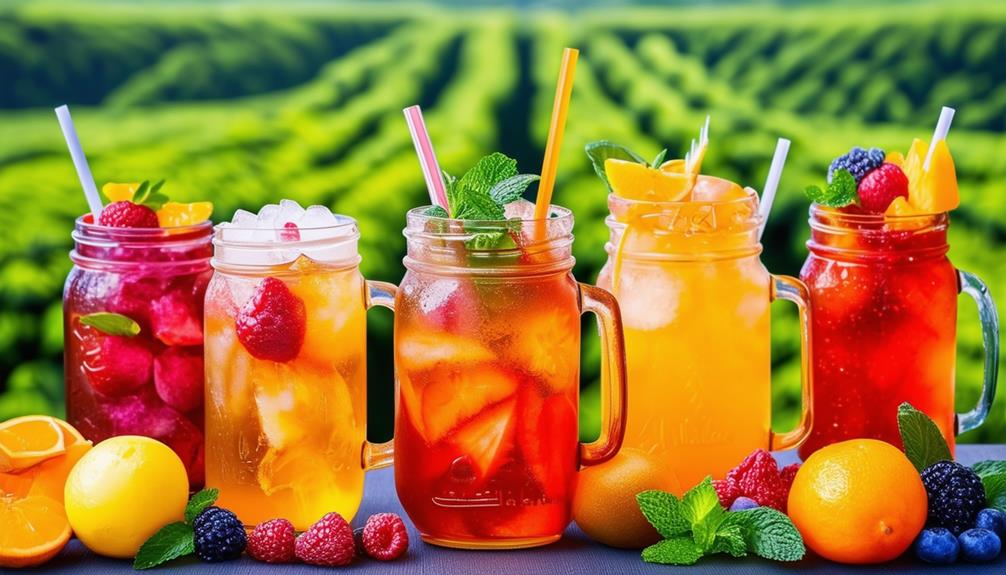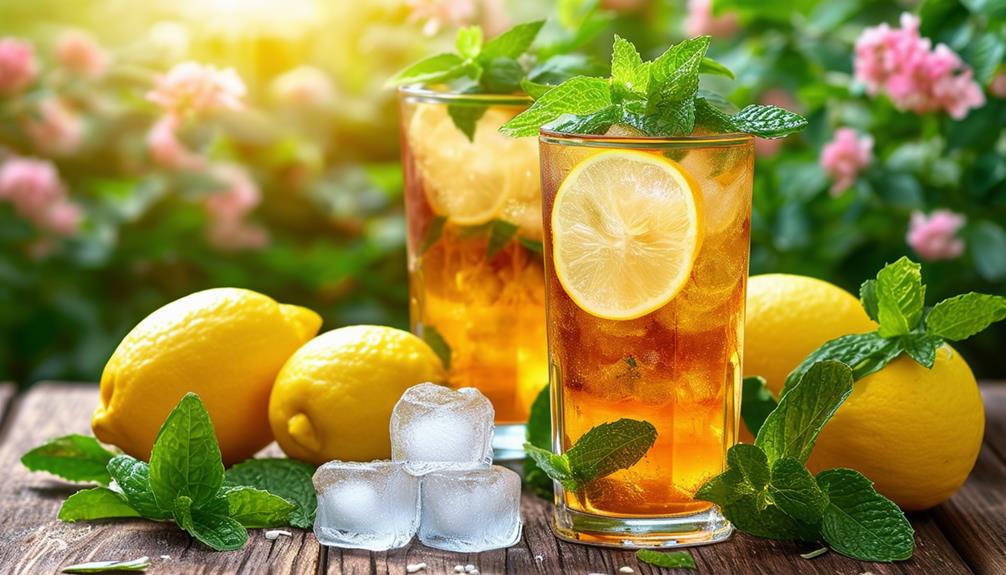When you think of refreshing summer beverages, iced tea likely comes to mind immediately. But have you ever wondered how this chilled drink gained its popularity? It began in the early 19th century, particularly in the sweltering southern United States. The pivotal moment for iced tea came at the 1904 World’s Fair in St. Louis, where it truly cemented its place in American culture. Since then, it has evolved dramatically, with countless varieties and flavors. Curious about how a simple brew transformed into a nationwide staple? Let’s explore the fascinating evolution of iced tea together.
Origins of Iced Tea

The origins of iced tea date back to the early 19th century in the United States, particularly in the southern regions where the hot climate made cold beverages highly desirable. Americans had been enjoying cold tea since the late 1800s, but the practice gained significant popularity due to the region’s sweltering heat.
A pivotal moment for iced tea occurred during the 1904 World’s Fair in St. Louis. Richard Blechynden, a tea merchant, was struggling to attract visitors to his hot Indian black teas amid a heatwave. In a moment of ingenuity, he decided to serve his tea cold by adding ice. This refreshing twist captivated fairgoers and made iced tea an instant hit.
Already familiar with cold tea, Americans eagerly embraced this chilled version. The blend of Indian black tea and ice was ideal for the oppressive summer weather. Thus, the 1904 World’s Fair solidified iced tea’s status as a quintessential American summer beverage.
Evolution in America
With the advent of refrigeration technology in the mid-19th century, iced tea quickly evolved from a regional specialty into a nationwide favorite. Initially popular as cold tea punches in the southern United States, the invention of refrigeration made iced tea more accessible and widespread.
A significant milestone in the history of iced tea occurred at the 1904 World’s Fair in St. Louis. At this event, iced tea was introduced to a broader audience, leading to its commercial success and solidifying its place in American summer cuisine. By the early 20th century, black tea had overtaken green tea as the preferred choice for iced beverages in the United States, further driving the evolution of iced tea.
Here’s a quick look at the evolution of iced tea in America:
| Time Period | Key Development | Impact |
|---|---|---|
| Mid-1800s | Refrigeration technology | Made iced tea more accessible |
| Late 1800s | Regional cold tea punches | Popular in the southern United States |
| Early 1900s | Shift to black tea | Became the preferred tea for iced beverages |
| 1904 | World’s Fair in St. Louis | Popularized and commercialized iced tea |
Today, iced tea is a staple of American summer cuisine, cherished for its refreshing taste and versatility.
Global Iced Tea Traditions

Across the globe, iced tea has become a beloved beverage, with each culture adding its unique twist and flavors. In China, iced tea made from black, green, oolong, and herbal varieties has gained popularity since the late 1980s. The southern United States is famous for its sweet tea, a cold, sugary concoction made from black tea, which is a staple at gatherings and barbecues, especially during the hot summer months.
In the United Kingdom, iced tea started gaining traction in the 2000s, with brands like Lipton, Nestea, and Twinings offering a variety of options. These brands have helped popularize the drink, making it a refreshing alternative to traditional hot tea. South Africa has also embraced iced tea, utilizing locally sourced rooibos in brands like Lipton, Nestea, and BOS, providing a unique and flavorful experience.
In Turkey, iced tea made its entrance in the 2000s, with Lipton and Nestea leading the market. Meanwhile, in South America, particularly Brazil, iced mate tea has become a popular choice, despite the traditional preference for hot mate tea. Each region’s adaptation showcases the versatility and broad appeal of iced tea around the world.
Popular Varieties
Iced tea’s popular varieties offer a delightful array of flavors and brewing methods, catering to every taste and occasion. From the classic sun tea to the ever-refreshing Arnold Palmer, there’s an iced tea for everyone. Sun tea, traditionally brewed under the sun, captures a smoother flavor perfect for hot summer days. It requires minimal effort—just leave a jar of water and tea bags outside for several hours or until it reaches your desired strength.
For a safer alternative, refrigerator tea is your go-to. Brewed overnight in the fridge, it minimizes the risk of bacterial growth and keeps your drink fresh. This method suits those who prefer their iced tea cold and crisp without the fuss.
The half-and-half, a mix of iced tea and lemonade commonly known as an Arnold Palmer, has been a beloved choice in the US since the late 1960s. It combines the robust taste of iced tea with the tangy zest of lemonade, offering a balanced and refreshing drink.
In the southern states, sweet tea is a staple, a testament to the region where iced tea was popularized. Whether you experiment with new iced tea recipes or stick to traditional methods, these varieties offer endless enjoyment.
Modern Trends

As consumer preferences evolve, modern trends in iced tea reflect a growing demand for diverse flavors and innovative brewing techniques. In the United States, iced tea remains a beloved beverage choice, with 85% of tea consumed being iced. Varieties of iced tea cater to regional preferences, with Sweet Tea reigning supreme in the southern states, while New Englanders prefer their tea lightly sweetened.
Cold-brewed tea has surged in popularity, offering a smoother, less bitter alternative to traditionally brewed iced tea. This method not only enhances flavor but also appeals to health-conscious consumers. Brands like Lipton, Nestea, and Twinings have embraced these evolving preferences by offering a wide range of iced tea options, from classic black tea to exotic herbal blends.
Various cultures worldwide have adopted iced tea, each adding its unique twist, thus expanding your choices further. Whether you’re purchasing a bottle at the store or brewing your own at home, modern trends ensure there’s something to suit every palate. As consumer tastes continue to shift, the variety and creativity in iced tea offerings are bound to keep expanding.
Conclusion
You’ve embarked on a journey through the rich history and evolution of iced tea, from its 19th-century origins to its establishment as a quintessential American summer staple. Witness how it has spread globally, adapting to various cultures and tastes. Today, the refreshing drink offers countless varieties and modern trends, ensuring there’s a perfect iced tea for everyone. Next time you sip on a cold glass, remember the rich heritage behind this beloved beverage.

